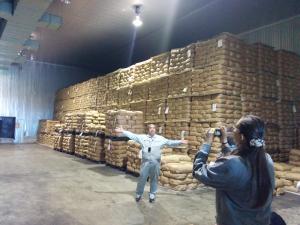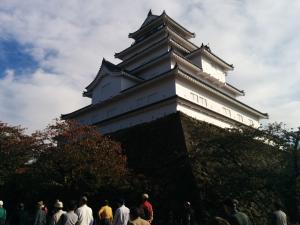This past October, I was blessed with the opportunity to travel around my prefecture with some of my fellow Assistant Language Teachers. While on this trip, I was able to see how the people of Fukushima are recovering from the Great East Japan Earthquake, tsunami, and subsequent power station failure at the Daiichi facility in Ōkuma. Together we saw how the people of Fukushima prefecture are working hard to rebuild their communities, production, tourism, independence, and safety. The task of recovery has not been an easy one for Fukushima, but with the help of forward thinking community members and investment in safe and sustainable resources, Fukushima is forging its own new path. Geothermal and wind generation facilities, coupled with solar projects and a ‘Feed in Tariff’ from the Japanese government, are working to provide clean, safe, and renewable energy to the prefecture. In the Aizu area, families that were displaced by the disaster are working hard to create a brand image for their cotton products by producing high quality, unique textiles. Most importantly, the prefecture’s main agricultural export, rice, is being consistently tested for radiation; with every bag being recorded, labeled, and catalogued using a QR Code that enables the buyer to be 100% sure of its quality and safety. The people of Fukushima prefecture have had to recover from more than just the environmental and structural damages caused by the events of 3/11. The stigma that lingers over the word “Fukushima” has been hard to erase. As such, the tourism industry in Fukushima has suffered tremendously. However, through the efforts of the government, the local communities, and the tireless volunteers and supporters of various attractions around Fukushima, the industry is beginning to recover. This prefecture has a wealth of history, tradition, and landmarks that make it a treasure of Japanese culture. To see new life breathing into that culture is inspiring. News organizations worldwide tend to report a skewed view of Fukushima as a contaminated wasteland. I can say from personal experience that this is not the case. On my journeys I have seen some of the most beautiful landscapes, vibrant and safe communities, and the most kind and hardworking people I have ever met. All too often we tend to focus on the events and the physical damages that occur during a disaster without considering the human cost. The efforts of the people in this prefecture are nothing short of heroic, and yet they conduct themselves with a stoic sense of pride that you can see on the face of anyone you talk to. They are proud of themselves as people, as communities, and as Japanese citizens representing their country and they have every right to that pride. They have more than earned it. They deserve praise and admiration for their efforts. I look forward to learning more about this wonderful prefecture and its people during the next study tour. Ganbate! |
| Summary |









